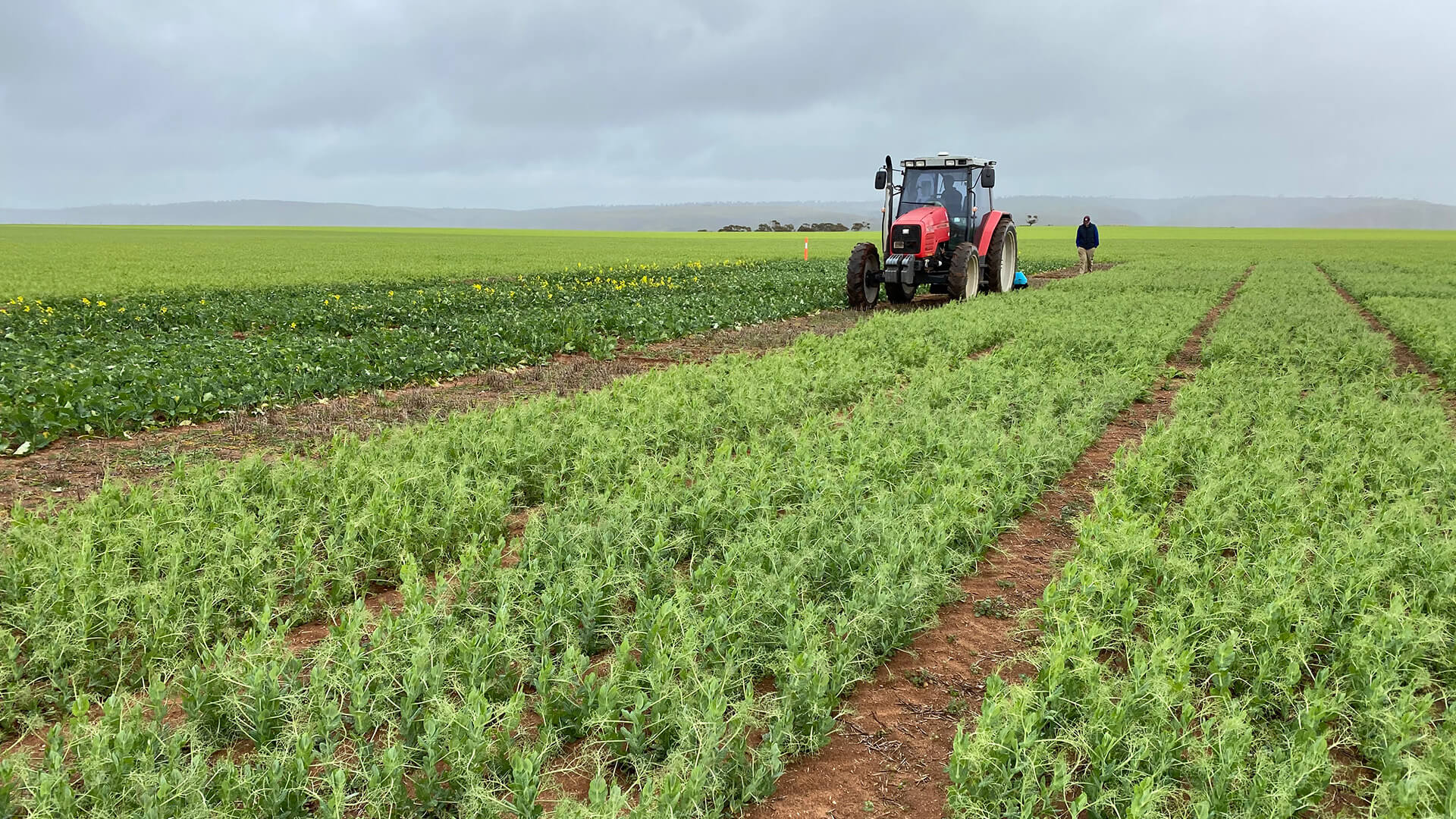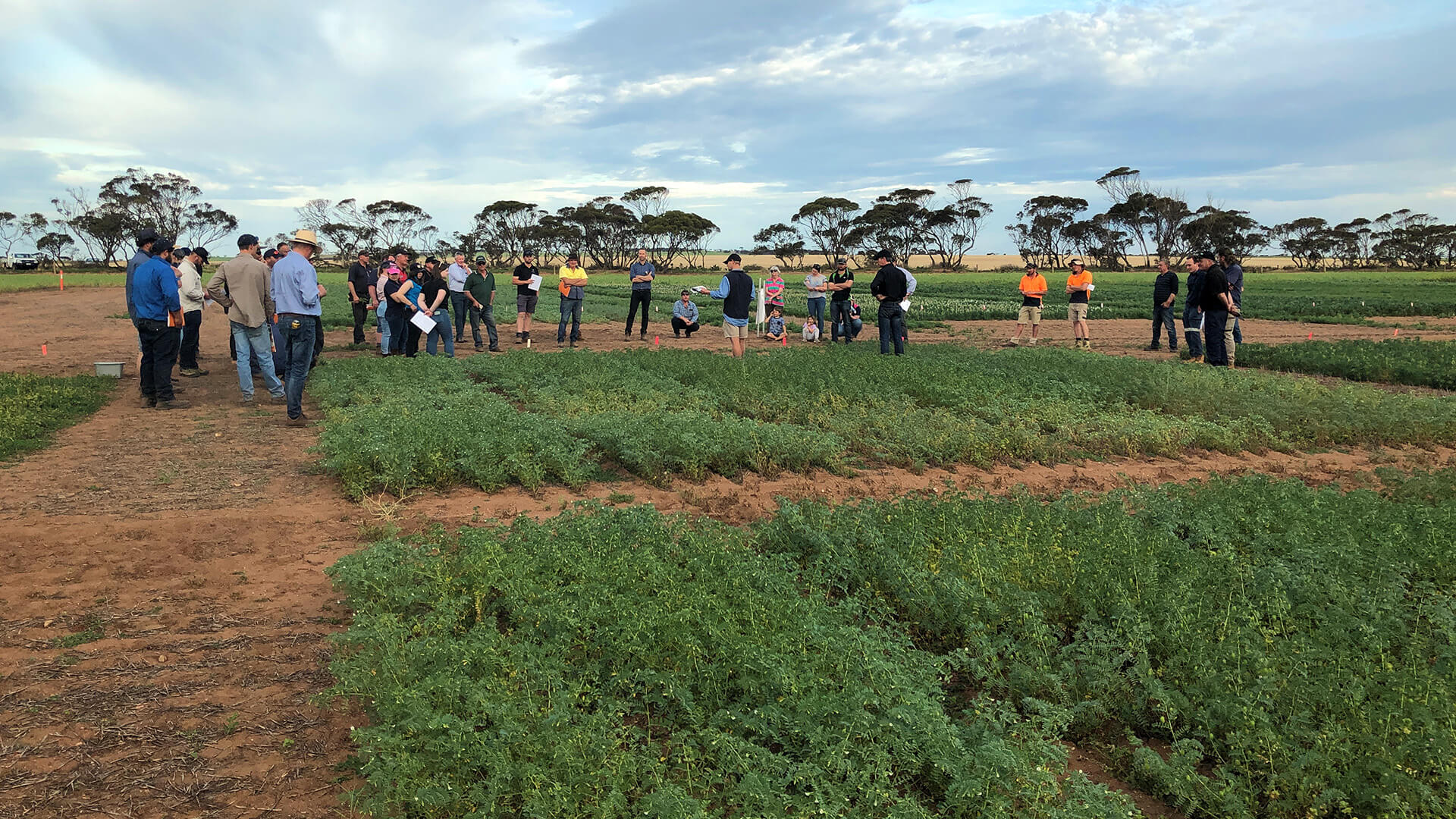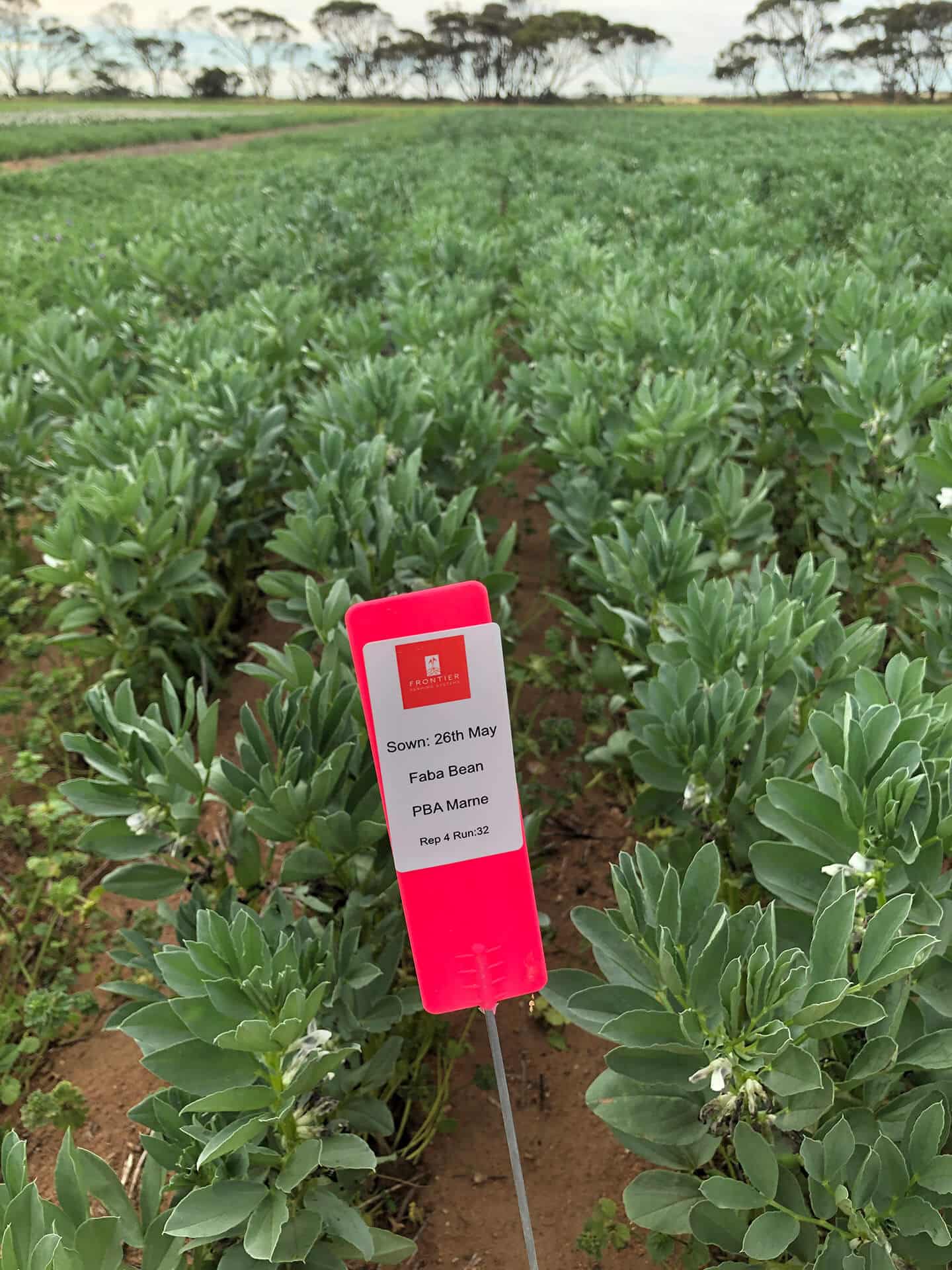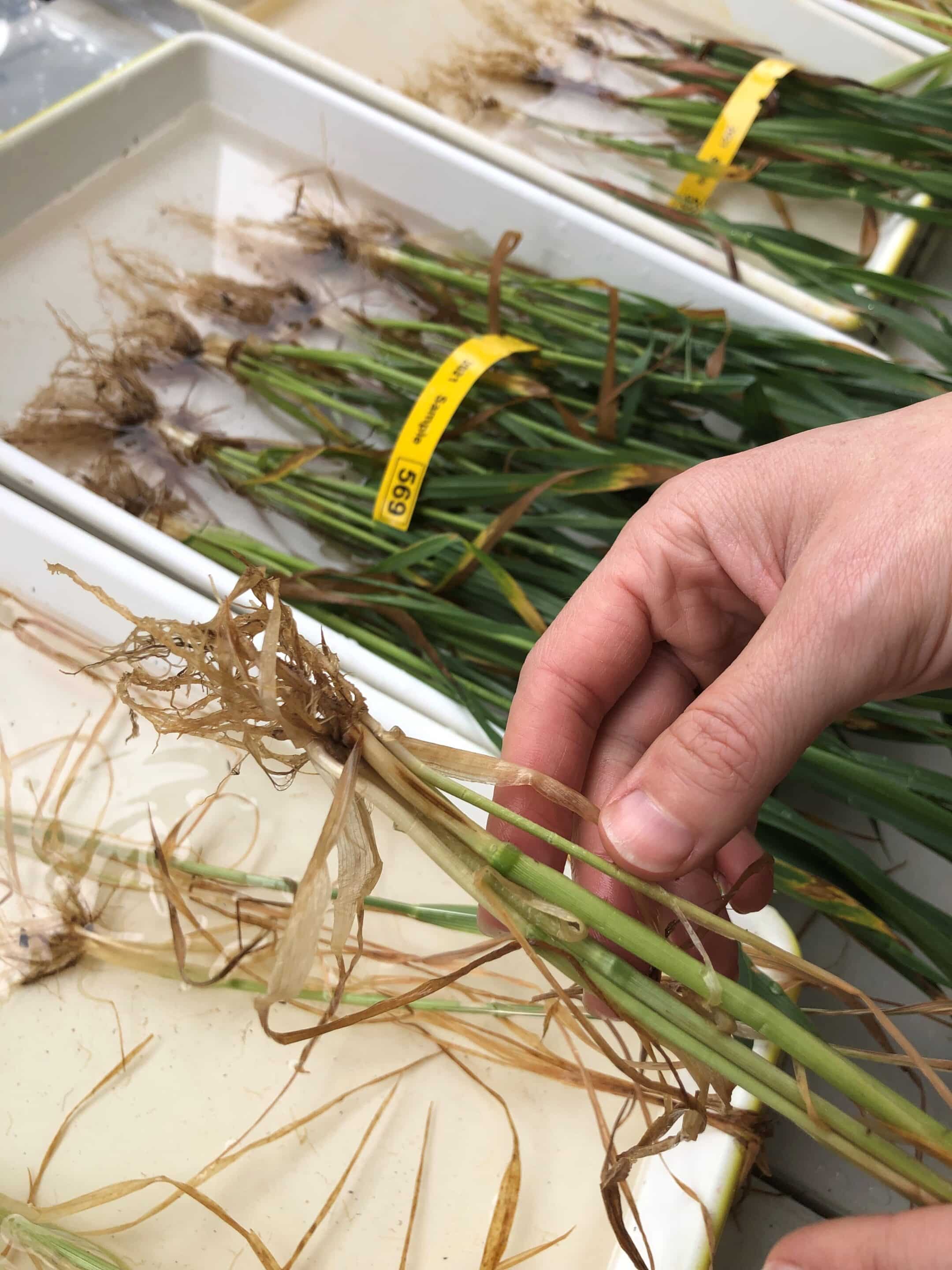START
FINISH

Summary
This project aimed to help Murray Plains growers select and manage legume break crops to enhance the productivity and sustainability of their cropping sequences and ensure their pulse rotations are profitable.
Through a range of trials during 2018, 2019 and 2020, the project explored the management and profitability of lentils, chickpeas, field peas, lupins, faba beans, vetch and canola.
Lentils were found to be the least risky and most profitable break crop, followed by vetch, chickpeas and field peas.
Background
Although lentils and chickpeas have proven to be profitable break crops in parts of SA, they have not traditionally been grown on the Murray Plains. Vetch has proven useful for grazing and peas are well adapted to the heavy soils, but neither has proven particularly profitable.
Given the value of pulses and canola as grain and, in the case of legumes, for making nitrogen available to subsequent crops, there was a need to provide growers with more information about successfully including a range of break crops in their rotations.
Research Aims
The core objectives of the project were to:
- Inform grower selection of appropriate break crops to enhance the productivity and sustainability of the cropping sequence.
- Increase understanding of agronomic management needed to successfully grow legumes in the area.
- Quantify potential risk and profitability for each break crop option.
In The Field
A range of break crop trial plots were planted near Sedan in 2018, near Angas Valley in 2019 and near Palmer in 2020. These included leading commercial varieties of canola, chickpea, field pea, faba bean, lentil, lupin, and vetch. Lupins were not sown at Sedan due to the soil type. Faba beans were sown as unreplicated demonstrations at both Sedan and Angas Valley.
These crops were managed and harvested to assess average yield. Gross margins were then calculated for the best performing treatments, using the Rural Solutions Farm Gross Margin and Enterprise Planning Guide and grain prices from the following January as provided by Grainwise.
Agronomically, the project also included a field pea blackspot management trial and a pre-emergent herbicide demonstration trial in 2018, inoculation trials in 2019, and time of sowing trials in 2020.
Drought conditions at the trial sites in 2018 and 2019 impacted the robustness of these agronomic trials. In 2020, later sowing (26 May versus 7 May) was found to benefit pulses, possibly due to frost events that impacted on the early sown plots.
A small unreplicated pasture demonstration was also included in 2020. Frontier Farming Systems collected biomass data from the demonstration and determined that Sultan medic performed best (>4,000kg/ha) while Arrow and Bladder Clover performed poorly (<1,000kg/ha).
Results
The project demonstrated that lentils are likely to be the most profitable and lowest risk pulse crop for Murray Plains growers. Analysis predicted an average long-term gross margin for lentils of $365 per hectare, with a probability of the gross margin exceeding $500/ha 28 per cent of the time while a negative gross margin is likely just 15 per cent of the time.
Vetch was found to have good potential with a long-term gross margin of $255/ha although there is significant risk of the market for pasture and hay seed to be quickly over-supplied in good seasons.
Chickpea and field pea were found to have a mean long-term gross margin of around $200/ha and a risk of not breaking even 25 per cent of the time. There is also a probability of these crops exceeding a $500/ha gross margin 15 per cent of the time.
Lupin and faba bean were found to have simulated long-term gross margins of $65/ha and faba bean had a probability of failing to achieve a break-even return 49 per cent of the time.
Project Participants
Frontier Farming Systems: Michael Moodie, Charlton Jeisman, Chris Davies, Declan Anderson
Peer Review: Kenton Porker, SARDI (now FAR Australia)
Trial Hosts: Greg Shultz at Sedan, McGormans’ Thornby at Angas Valley, Steen and Deanna Paech at Hillydale Farms, Palme
The Problem
Pulse grain crops can be profitable and beneficial cropping rotations, but their uptake on the Murray Plains has been limited.
The research
Trials with a variety of legumes were sown at three Murray Plains locations and potential gross margins assessed.
More information
Deanna Lush, Murray Plains Farmers,
T: 0419 783 346
E: [email protected]
Value for Growers
The findings of this provide farmers on the Murray Plains with region-specific insights to help support their crop rotation decision-making in relation to selecting break crops. With this information, growers will be better able to assess the likely input costs, market risks and potential returns of different break options. This will help support and enhance the ongoing productivity, profitability and sustainability of their cropping systems. The trial has since led to accelerated and increased uptake of lentils in the region.
The 2020 pasture demonstration also showed the potential value of various pulses for mixed farming systems.
Latest Research Projects





